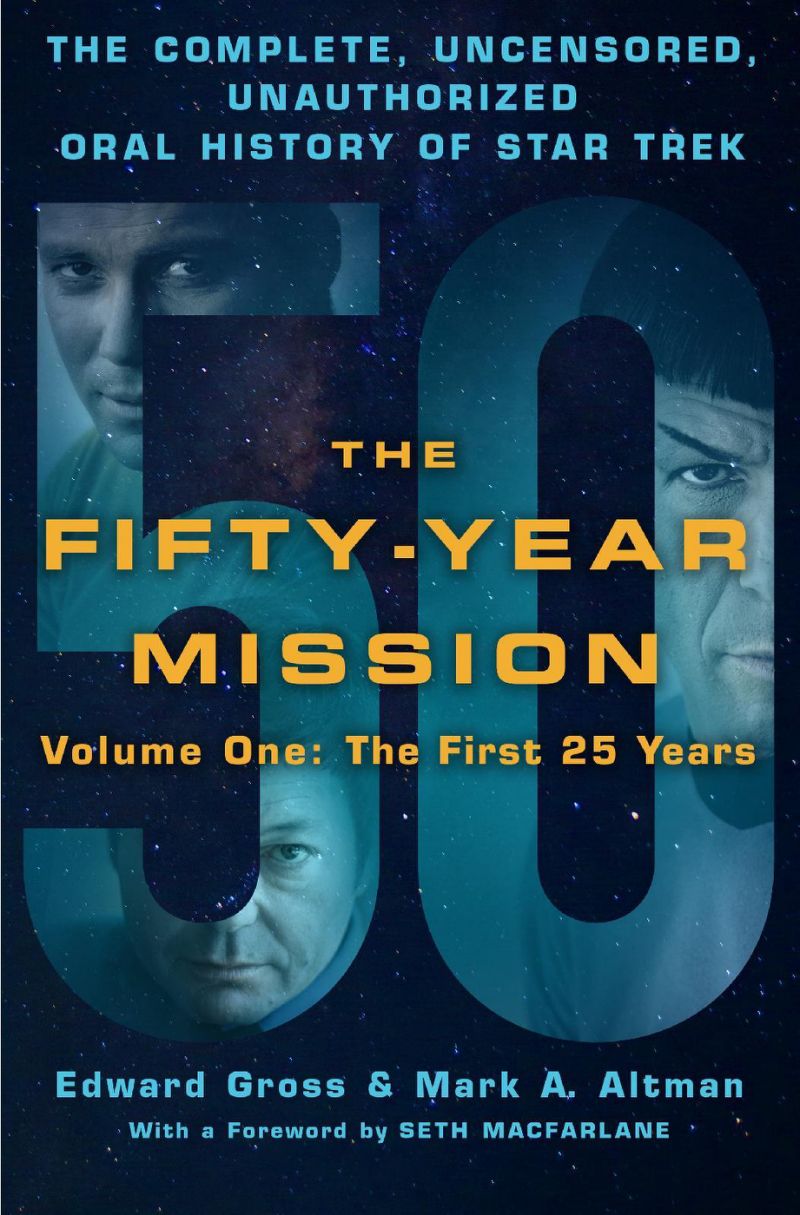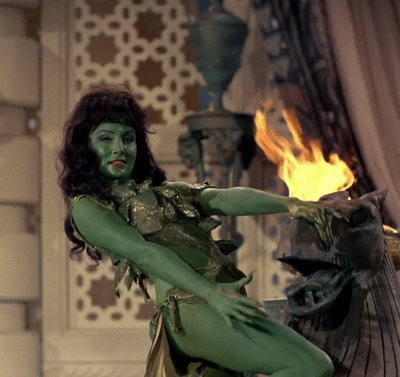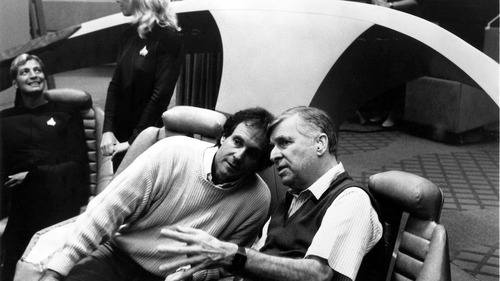Disclosure: I was provided an advance copy of this book by the publishers in exchange for an honest review of it.
The Fifty-Year Mission by Edward Gross and Mark A. Altman bills itself as “the complete, uncensored, unauthorized oral history of Star Trek,” with Volume 1 spanning the making of The Original Series, The Animated Series, and the first six movies.
What the authors mean by “oral history” is that the vast majority of the book is made up of succinct quotations drawn from three decades of interviews. These include differing perspectives from key players on-screen and behind-the-scenes, “superfans” like Bjo and John Trimble, as well as from people involved with the franchise later (e.g. Ronald Moore, Bryan Fuller, and Rod Roddenberry) looking back on the events’ significance.
The effect is that every chapter reads like the ultimate convention super-panel: what you’d imagine if you got everyone you ever wanted to talk about – say – the making of Star Trek V up on the same stage. That’s extremely cool.
However, the book would be much more useful as a reference, and much more enlightening overall, if the authors had chosen to include interview dates with the quotations. Trek fans will know that people such as Gene Roddenberry changed their opinions about Star Trek over their decades in the franchise. But because the interviews have no dates, the audience can’t be sure whether a particular quote from, say Leonard Nimoy, is from 1986 or 2010. It creates the illusion that a particular quote represents the singular, eternal opinion of the speaker.
As someone particularly interested in the role of women in Star Trek, I was disappointed the volume did not include more women’s voices. In the first chapter, which takes a big-picture look at the significance of the franchise, there are six quotations about women’s portrayal in Trek – all by men.
I understand there was a strong gender imbalance both behind the scenes and on-screen during the years covered, but the authors appeared to have sought out new external interviews (for example, with American Studies professor Thomas Doherty and actor Chris Pratt), and so there may have been an opportunity to bring in more women’s perspectives.
The one exception is the fabulous chapter devoted to the growth of the Star Trek fandom post-TOS. In this part, the authors include the voices of several women who organized conventions, published fanzines and more.
The “uncensored” aspect of the book makes for some entertaining and mostly informative reading, helping shed light on the personality disputes that occurred behind-the-scenes. But some of the included content is really no more than unhelpful gossip, such as various comments on the temperament of Gene Roddenberry’s first wife, or a production assistant’s speculation that Kirstie Alley’s reason for not appearing in Star Trek III was possibly due to weight gain.
Volume 1 of The Fifty-Year Mission is an accessible, entertaining and intriguing look at the first 25 years of Trek. It could never definitively address every character, scene, script rewrite, or audience reaction that occurred during those 25 years but it’s a good overview that lets you hear directly from those most closely involved.










